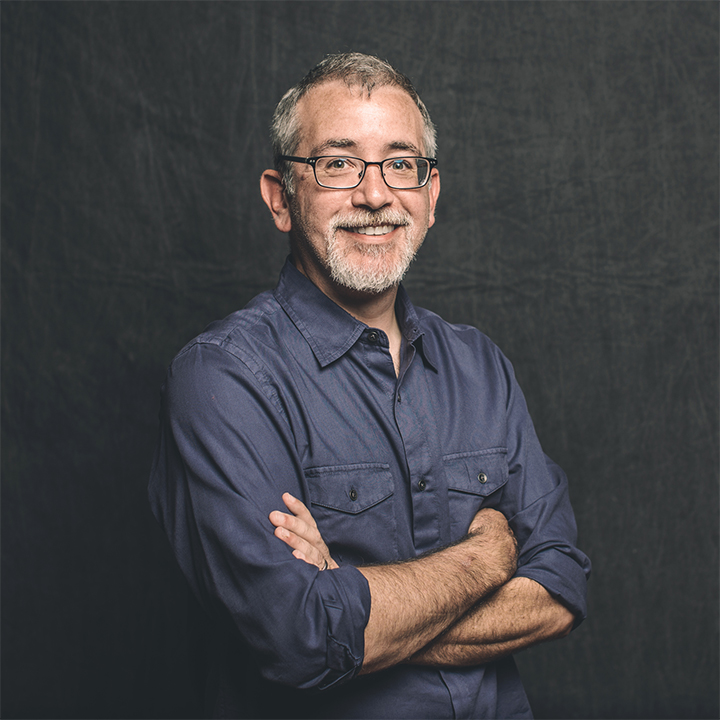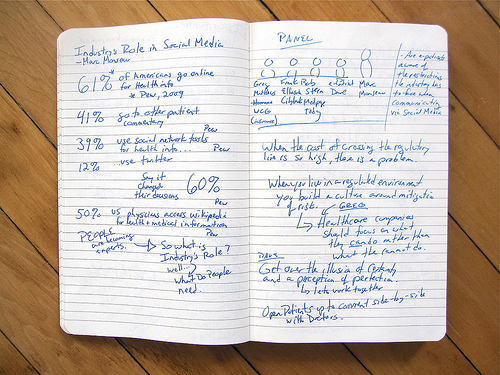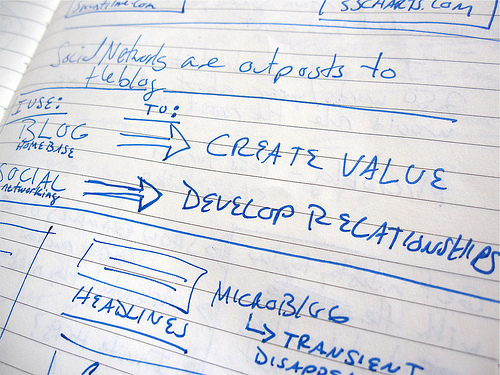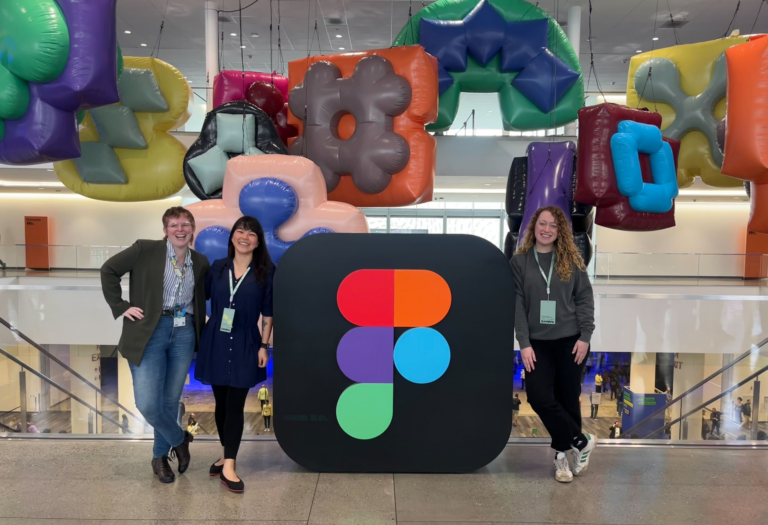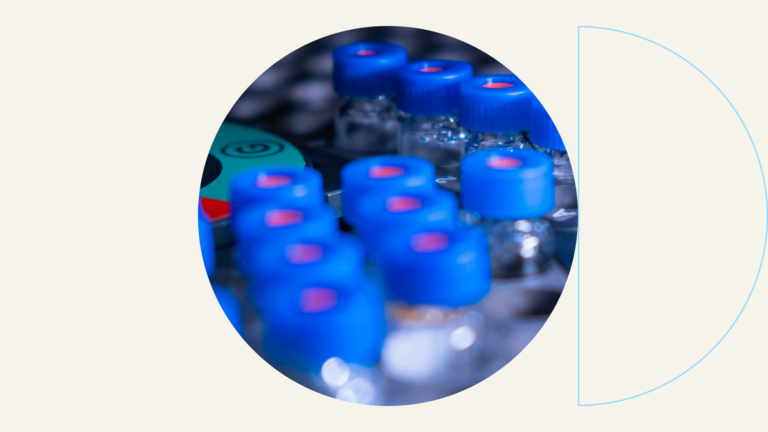BlogWorld Social Health Recap Part Deux
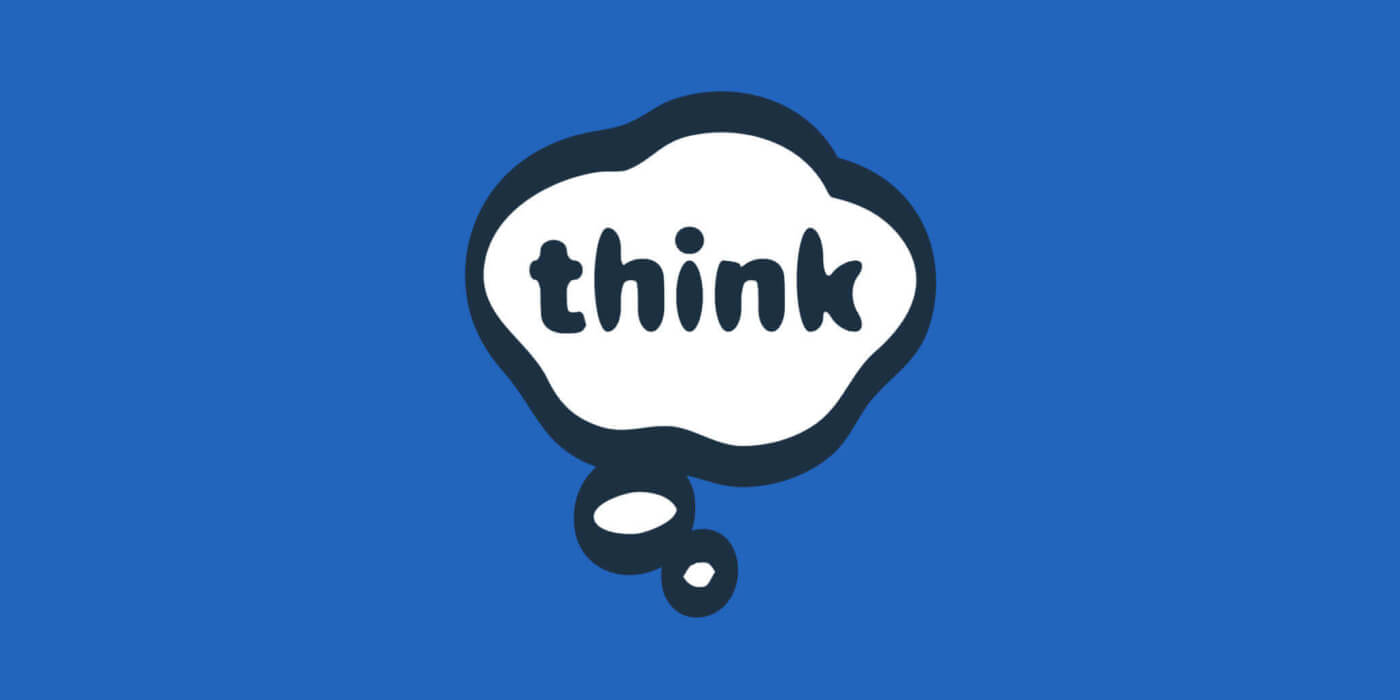
Keynote: e-Patient Dave
I’ve seen Dave speak in the past so I was thrilled that he didn’t just pull out a standard keynote. CLARIFICATION: Having seen Dave speak once in the past, I was thrilled to see he’s not the kind of speaker who pulls out a standard keynote. If you want to understand the profile of the fully engaged patient of the future, find out where Dave is speaking next… and if he asks for his data, give him his damn data!
Session: Health Care Industry Issues
Marc Monseau of Johnson & Johnson moderated this panel with Greg Matthews, Bob Stern from MedPage Today, e-Patient Dave and Frank Eliason. The discussion extended into the audience where physicians, patient advocates, lawyers and regulators from the industry added to the conversation. Some of the main takeaways were:
- Industry should focus on what they can do within their regulatory constraints, and on doing it really well
- Digitally engaged patients actively seek out information from trustworthy social health communities; there are examples of the damage done by inaccurate information such as the autism vaccine controversy
- Industry can fill the vacuum of information to help social health communities flourish on their own
- Lengthy embargoes on research imposed by the publishing industry are a major barrier in the digital age; if publishers change their practices, it will improve public health
- Industry should consider publishing information often believed to be too advanced for non-professionals and trust the active digital communities to sort it out
Session: Social Networks and the Medical Blogosphere – Compatible or Competitive?
Kim McAlister (emergiblog) moderated a discussion with bloggers Kevin Pho (KevinMD), Bryan Vartabedian (33Charts) and Kerri Morrone Sparling (sixuntilme) about the decisions they make when blogging vs. engaging in social media platforms.
The two big notes in my notebook:
Whether it’s conscious or not, these successful bloggers have a keen sense of content strategy. The key to engaging their audience across multiple social platforms is knowing what they are publishing, who it is for and what the best outlet is for that message. Read Kerri’s thoughts here and Dr. Pho’s take on it here.
Session: Whiteboard & #SOCHEALTH
Marc Monseau of Johnson & Johnson and David Armano from Edelman Digital bravely facilitated an open-format whiteboard session that energized everyone in the room.
The audience represented many of the social health stakeholder groups: “Big Pharma”, patient advocate / e-patient bloggers, blogging health care professionals, consultants, and interactive agencies. Not represented, but ultimately required at the table are the insurance industry and the FDA.
What transpired was a frank conversation about the current state of the social heath space. Marc passed the microphone and facilitated one of the most productive and collaborative conversations I‘ve witnessed at a national conference. Armano’s visual notes can be found here, and if you follow the Twitter hashtag #sochealth you’ll likely find a slew of summaries. My thoughts:
- Social health communities set up by patient and physician bloggers are thriving. Decades of mistrust across many of the players and the lack of trusted, comprehensive, community-curated information sources are becoming an issue for the leaders in these communities.
- Industry can have a positive impact by simply providing reliable information. The communities are independently effective at assessing, curating, and sharing information they find to be credible and valuable.
- It’s important to note that “information” means data that helps patients and clinicians understand medical conditions and the risks and benefits of treatments. We are not talking about marketing messages, pretty pictures or fancy gadgets.
- While it wasn’t highlighted throughout the day, I think it’s important to note that research demonstrates that industry-provided information is regarded as biased more often than it is considered to be balanced. This is a barrier we will need to continue to address over time, but the first step is to clear out the messaging that created those perceptions of bias in the first place.
Wrapping Up
The final keynote was Rohit Bhargava interviewing Doug Ulman about how https://www.livestrong.org/ has embraced social media. Doug is a two-time cancer survivor, the CEO of Livestrong, and an inspiring speaker with a calm demeanor. Livestrong practices deliberate strategies when engaging their audience through social media. Go here for Rohit’s summary of the session and a video of the discussion.
After that, a bunch of us got together for some good food, a few drinks and a lot of laughs with new friends. Nice way to end the day.
